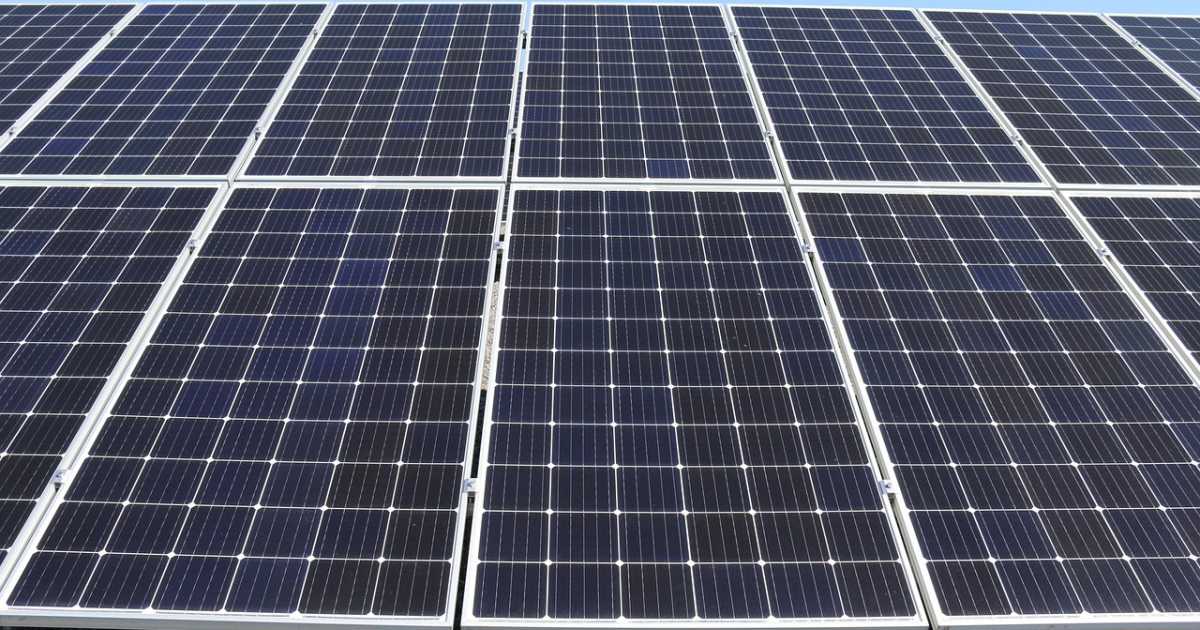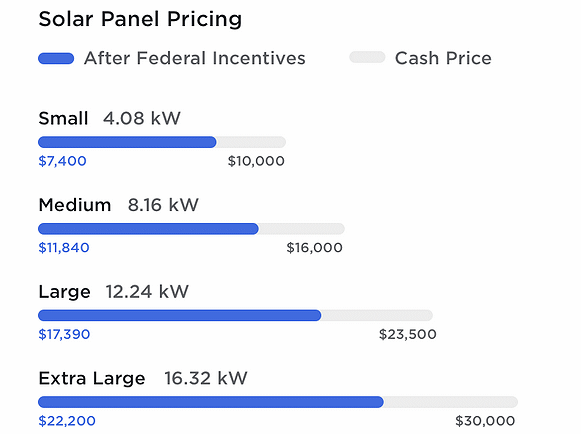
There’s been some buzz about Tesla slashing the prices of its home solar offerings in the USA. The reduction still makes going solar in Australia look like an absolute bargain.
Electrek reported last week Tesla has reduced pricing of its solar installations as it attempts to ramp up its energy division.
“… it looks like the price cuts could be even greater than 20% on a per watt basis,” said Electrek’s Fred Lambert.
That’s quite a drop. Here’s the new Tesla solar pricing and bear in mind these figures are in U.S. dollars.
Let’s take a look at the 4kW system – at USD $7,400 after the federal incentive, that works out to around AUD $10,800 based on current exchange rates . A good quality 4kW solar system costs somewhere in the $4,000 – $6,000 range in Australia currently after the national subsidy; depending on the components used. For what the U.S. 4kW system costs, you could buy a fully installed 10kW system here.
The 8kW Tesla system comes in at around AUD $17,250 – in Australia, the price range for 8kW systems is approximately $7,500 – $11,000.
Aside from system costs, Australia also has a couple of other important advantages over the U.S. residential PV scene that makes home solar here an even better deal.
Australia Vs. U.S Electricity Prices
As in Australia, electricity pricing in the USA varies state to state; but currently the national average is USD 13c per kilowatt; which works out to approximately AUD 19c. Electricity ranges from around 23c – 36c per kilowatt hour over here, depending on the state.
Cheaper solar and more expensive electricity in Australia also means rapid system payback. For example, a 6.6kW solar system installed in Adelaide has a simple payback of around just 3 years, 4 months. You can check out the estimated payback for different sized PV systems where you live using SQ’s solar calculator.
Simpler Incentives
Another major difference between the USA and Australia for home solar power is the way incentives work.
In Australia, the national solar subsidy is a big discount off the up-front cost of installing a system – you can learn more about Australia’s “solar rebate” here.
In the USA, the incentive is the federal solar tax credit, also known as the investment tax credit (ITC). It’s also generous, reducing the cost by 26%. However, PV buyers have to claim the solar tax credit when they file their yearly income tax return – meaning they need cash for the full system price up front to buy the system. With systems being significantly more expensive, this creates an additional roadblock for households.
The residential solar energy situation may not be perfect in Australia, but we’re still very much the lucky country compared to the USA.


 RSS - Posts
RSS - Posts



I’ve seen some of their systems from watching EV YouTubers. They seem to have various extra components such as an extra meter or two and boxes for other things. Their systems seem overly complicated. That could partly explain the extra costs. Someone with good knowledge of how we hook up solar should go over there and show them how to simplify their systems while keeping them perfectly safe.